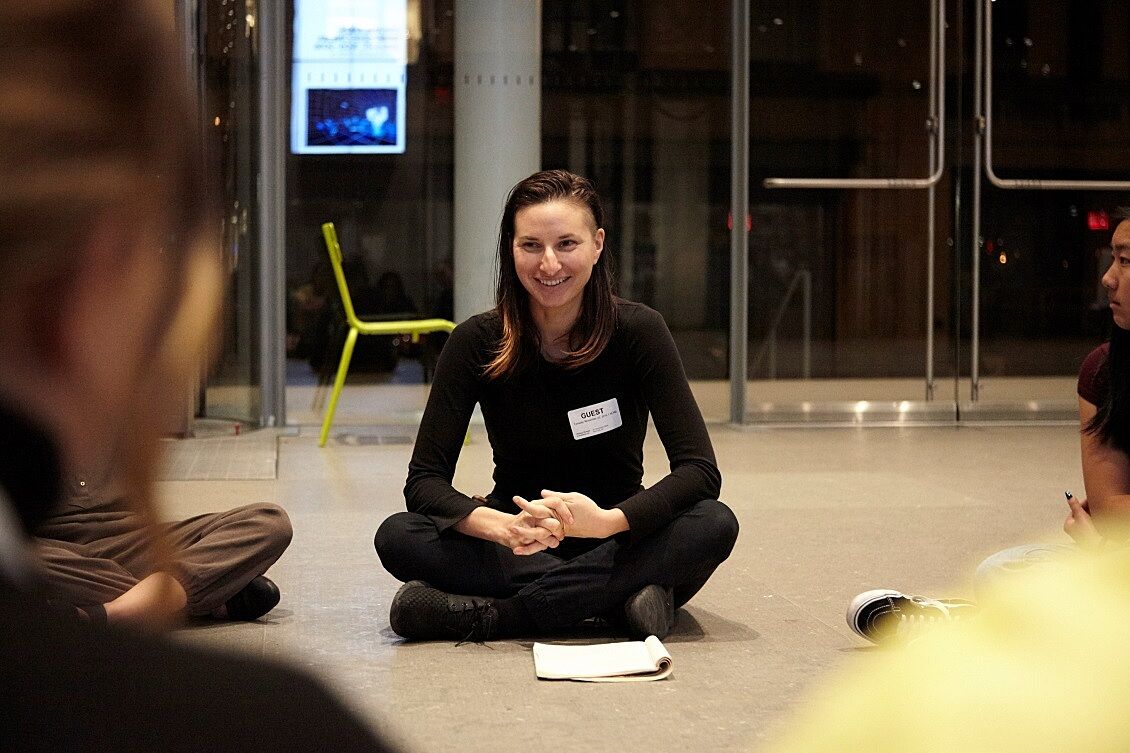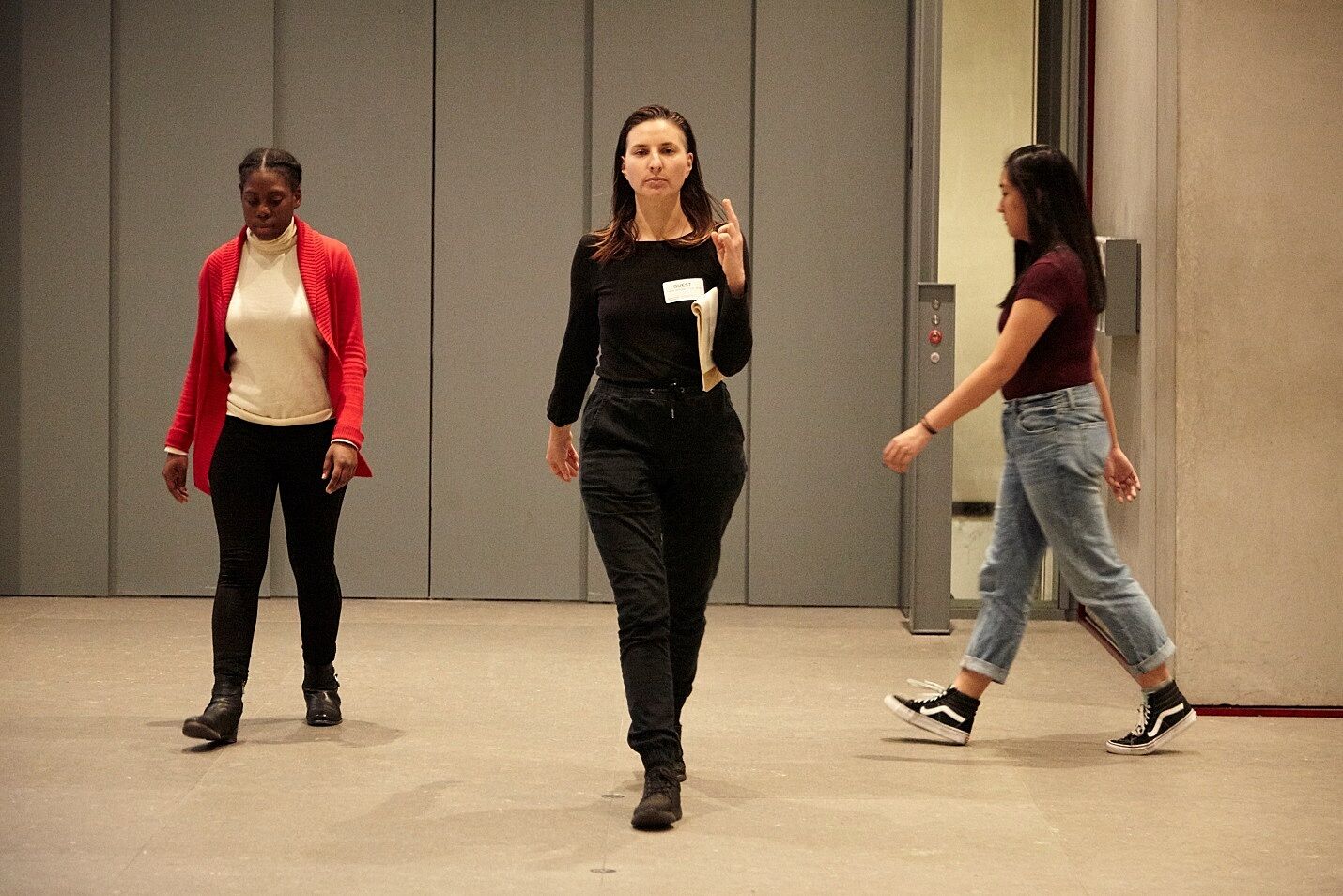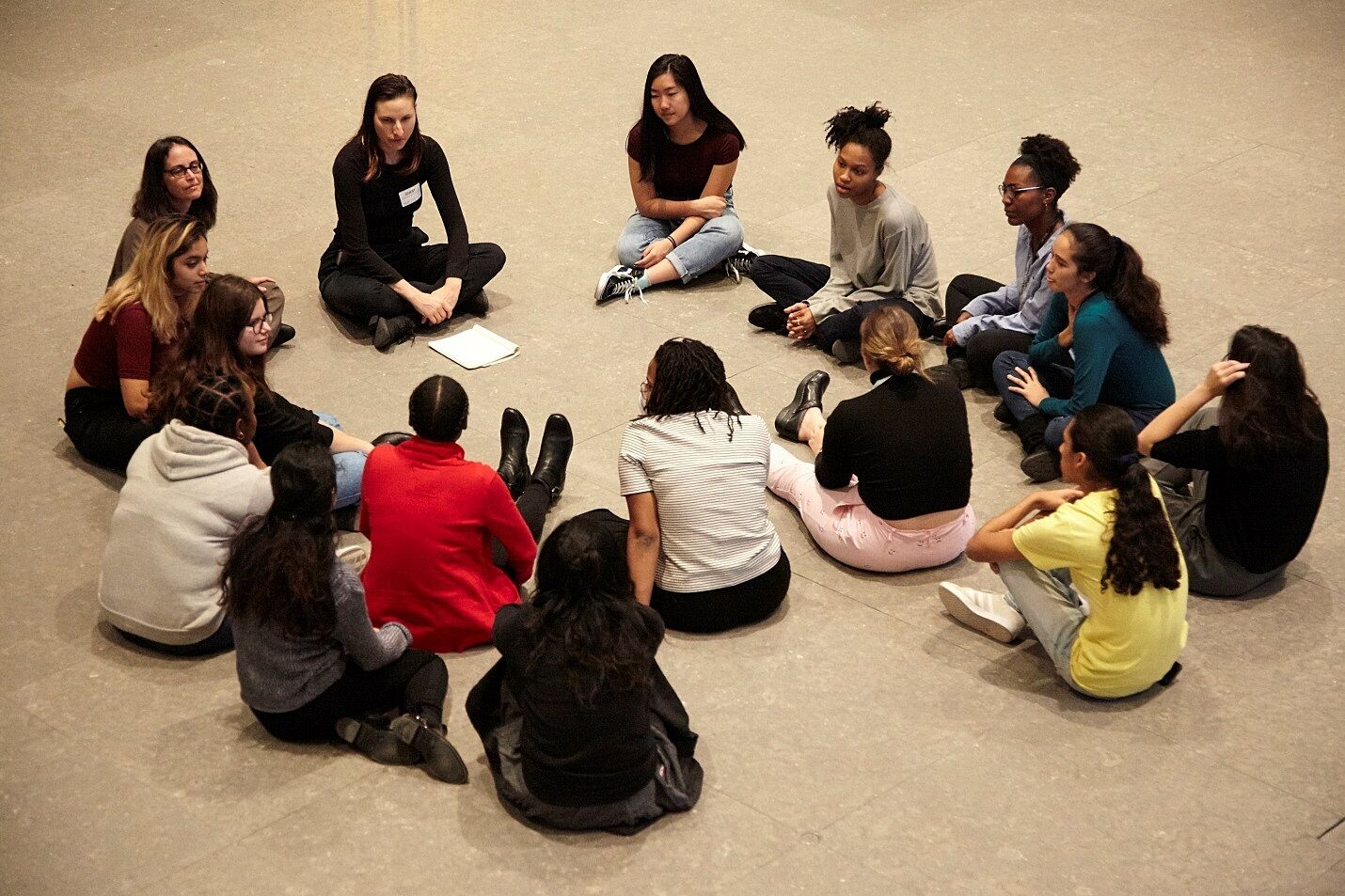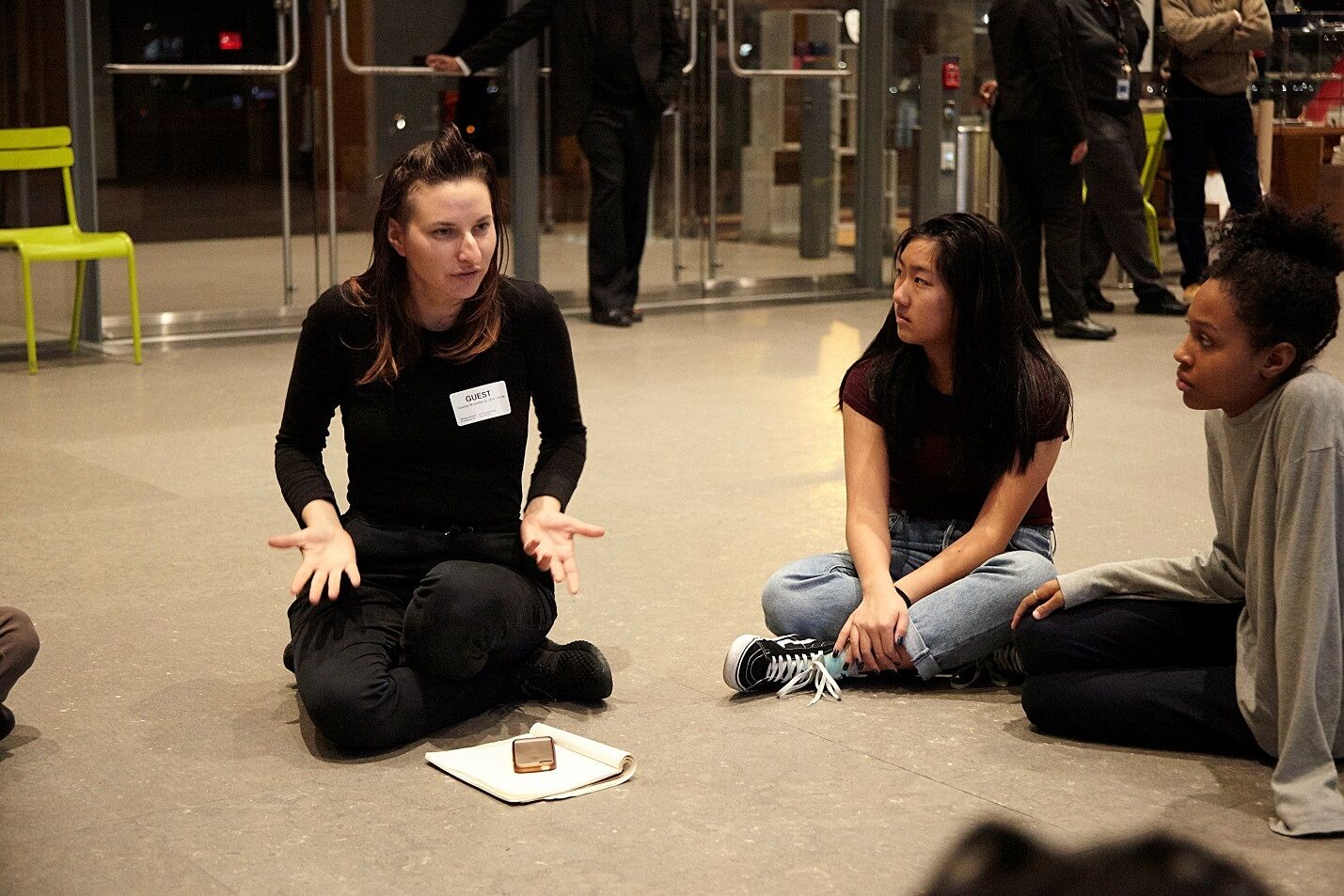Interview with MPA
Feb 16, 2017
In November, Youth Insights leaders met with artist MPA to discuss her exhibition MPA: RED IN VIEW. MPA also led a workshop called the Grid. In February 2017, YI Leader Gia interviewed MPA before her ten-day performance (Orbit) in the Whitney Museum's Susan and John Hess Family Theater.
RED IN VIEW unfolds in four movements throughout the Museum. The exhibition begins in the lobby gallery and extends to the theater in February for a culminating performance. Over the course of ten continuous days, MPA and artists Amapola Prada and Elizabeth Marcus-Sonenberg perform Orbit, living in the narrow space between the windowpanes of the theater. The space becomes a biosphere: an enclosed, self-sustaining habitat, modeled after an environment where the first settlers on Mars might reside. Read Gia's interview with MPA below.
Gia: Is there a particular song that reminds you of space or space travel?
MPA: Oh, what a great question! You know, I came up in a noise community and I feel that a lot of the experimentations that surfaced particularly in the 70s, with synthesizers and other kinds of electronic experimentation, make me think about communicating across space. I think I’d say that because a lot of those sounds have melodies that are about sending a signal, about sound bouncing through satellites in space, or the communication that’s possible with the exploration of other frequencies. In the noise community there is a lot of exploration into different frequencies, things that stimulate feelings in the body or explore other kinds of ringtones in your ears. So I think about that, and probably second would be Alice Coltrane, Journey in Satchidananda. There is (also) the Sun Ra Arkestra, which is a dream manifesto for sound and contacting space, and being part of another dimensional dialogue.
Gia: So in today's society, humanities and science are subject areas that are often polarized. As an artist whose work showcases scientific research, is your work an attempt to reconcile the two? If so, what have you done to bridge this gap?
MPA: That’s actually a question that comes across The Interview line [in RED IN VIEW], from the interviewers. We wouldn’t ask it as directly, but there is a discussion about asking what folks feel is human to them and that opens up a dialogue about what seems necessary, and also what people use. I ask the question at some point that says: what determines your reality? Does it come from science? Does it come from personal experience? Does it come from matters of space? Government? A lot of folks often answer science or they just answer personal experience.
I would say that The Interview line or the project Orbit might be reaching outside that genre or pointing/exploring past the rigidity of what’s defined as art and what’s defined as science. The only other thing I would add is that the work was not an artistically researched project. There were a lot of discussions with scientists and U.F.O investigators and energetic workers who consider their craft science, and [these discussions] fueled it as much as making aesthetic choices.
Gia: Do you feel the process of space exploration is transparent? Would you like to see more transparency around research regarding space, space travel, and space colonization?
MPA: Yes! I would love to see more transparency. Things are shifting right now, in terms of access to NASA scientists its limited even for themselves. They are very compartmentalized. If you're talking to someone who is currently working on a particular robotic arm, they aren’t necessarily in the know about what’s happening with the Mars exploration.
Gia: When space travel is commercialized, do you plan on going?
MPA: [Laughs]. You know, probably five years ago when I got turned onto the notion that humans were really at work trying to go to Mars, which at the time felt very provocative and shocking. I thought no, that’s just so far-fetched in my mind, and now having done two rounds in The Interview and spent quite a lot of time thinking about it, I am more curious now than I was to go on a space journey myself.
Gia: What do you think the human condition is on earth?
MPA: Red in View has been a test for that question about how to speak across backgrounds and how to speak in a way we don't think we’ve heard already, trying to create doorways or other avenues that we can realize together. I would also say TheInterview piece, because it’s anonymous, I need to find a way to make this happen, and there are a few ideas for the future. People seem ready to talk about race, about gender, about class. They seem really ready to talk about their differences and their emotions with it when it’s anonymous, and it’s remarkable.
Gia: Through all of the conversations you’ve facilitated and your work, and your performance art, what is one outcome you are most excited about?
MPA: This possibility of humans connecting across assumed lines of difference would probably be the greatest. The bigger life goal would be to redirect us out of this path of destruction. If we could, as a species, come to terms with it and find balance.
By Gia, YI Leader




